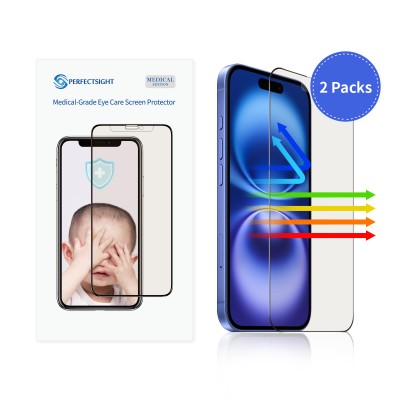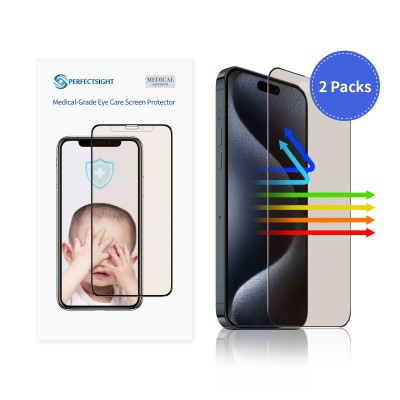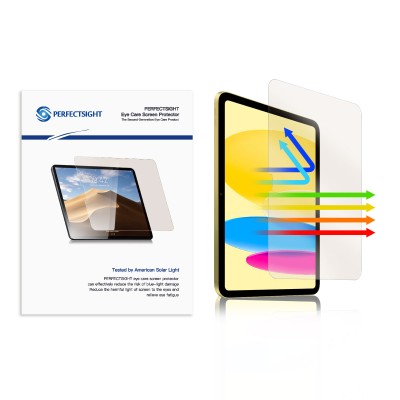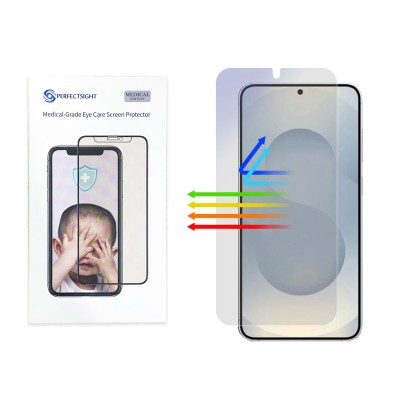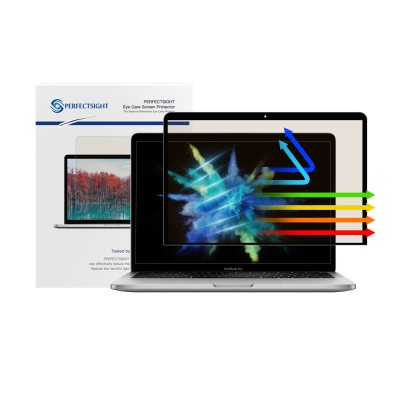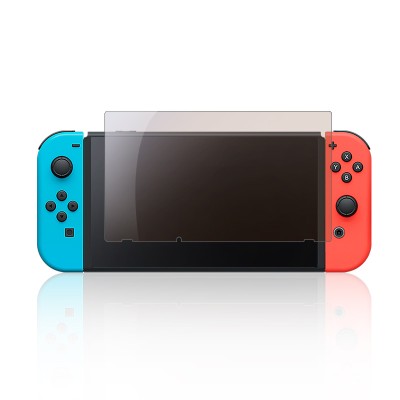Blue Light Screen Protectors vs. Night Mode: How to Choose Eye Protection Solutions Scientifically
As digital device usage surges, blue light protection has become essential. Blue light screen protectors and night mode are two mainstream solutions, but they differ significantly in their protective mechanisms, applicable scenarios, and practical efficacy.
The Science of Blue Light Protection
The Dual Nature of Blue Light
Beneficial wavelengths (460-500 nm): Regulate circadian rhythms and maintain daytime alertness.
Harmful wavelengths (415-455 nm): High-energy short-wave blue light (HEV) that may penetrate the retinal pigment epithelium (RPE), potentially causing photochemical damage (Journal of Photochemistry and Photobiology).
Core Protection Goals
Targeted filtration of harmful blue light rather than complete blockage (over-filtering distorts colors and disrupts circadian rhythms).
Reduce cumulative exposure: Prioritize mitigating prolonged low-intensity blue light exposure during daytime use.
Blue Light Screen Protectors vs. Night Mode
Advantages
protection: Effective across all lighting conditions and applications (e.g., document reading, video conferencing).
Precision spectral control: High-quality protectors filter ≥30% of harmful blue light with minimal color accuracy deviation.
Anti-glare enhancement: AG (anti-glare) coatings reduce screen reflections, alleviating ciliary muscle strain.
Limitations
Higher upfront cost: Prices range from $30–70 per protector (varies by device size and technology).
Substandard product risks: Low-cost options may cause excessive yellow tint or reduce transparency.
Advantages
Zero-cost, instant activation: Ideal for short-term nighttime use (e.g., scrolling before bed).
Partial fatigue relief: Warmer tones reduce perceived screen glare.
Limitations
Ineffective in daylight: Blue light reduction drops to <20% under bright ambient light.
Uncontrolled color distortion: Unsuitable for color-sensitive professionals (e.g., designers, photographers).
Which Solution Aligns with Eye Health Needs?
Optimal Use Cases for Blue Light Protectors
Long-term exposure: Ideal for daytime office work (8+ hours/day) or children’s online learning.
Color-critical workflows: Designers and photographers benefit from premium protectors (e.g., BenQ ScreenBar) that balance protection and color fidelity.
Night Mode's Niche Applications
Temporary nighttime use: Mitigates melatonin suppression during brief pre-bedscreen sessions (1–2 hours).
Low-intensity users: Suitable for casual users with <3 hours of daily screen time and no dry eye symptoms.
Conclusion: Match Solutions to Your Lifestyle
Night mode serves as a quick fix for occasional after-dark use, while blue light screen protectors excel in high-intensity, multi-device environments. For users exceeding 6 hours of daily screen time, the stability and compatibility of physical protection are unmatched. Light users may prioritize cost-free software solutions.
